Published Oct 1, 2022
8 Stand Out Moments from Deep Space Nine
One fan looks back at her favorite DS9 scenes.
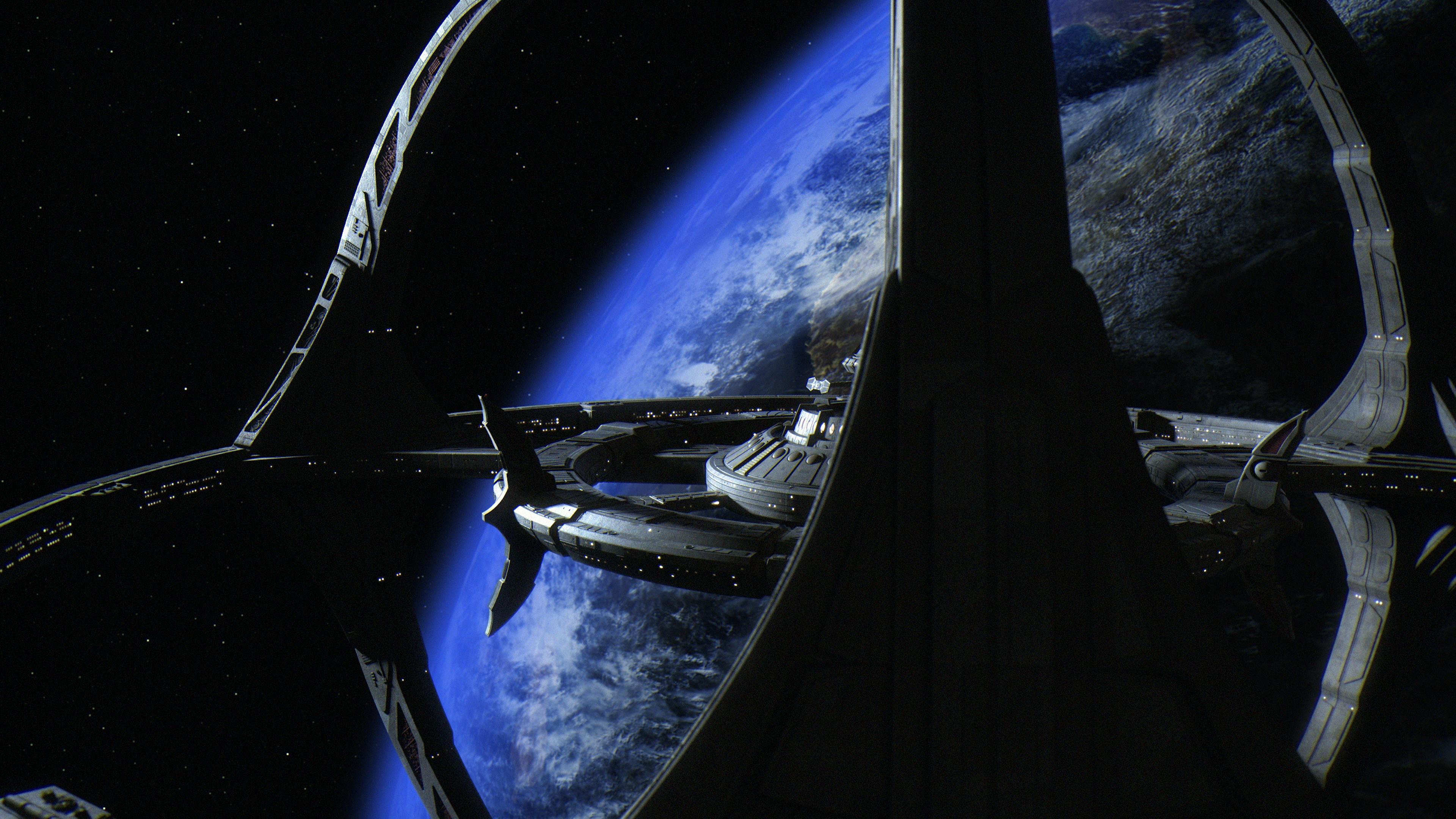
StarTrek.com
Star Trek: Deep Space Nine is noted for many things: a stellar cast, beautiful production quality, masterful storytelling. It’s no secret that one of the other things that makes it so remarkable is the caliber of its writing. While other series focused on exploration and how the Federation maintained its utopia, DS9 took a step towards something a little more real. With serialized story arcs and flawed, complex characters, the writers took a chance and showed us how complicated life among the stars can truly be. As such, they delivered countless moments that reflected our own humanity back at us. Since DS9 is known for a morally complex narrative, I’d like to discuss — in no particular order — what I feel are the best, most-poignant moments of the series’s run.
8 Stand Out Moments From Deep Space Nine
8. Quark's Speech to Nog
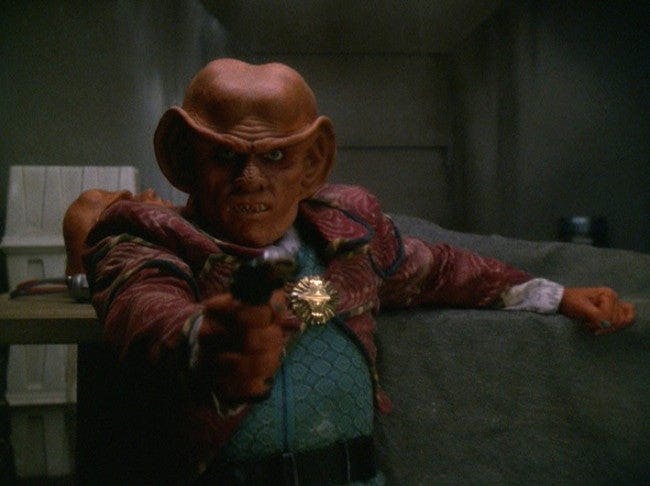
StarTrek.com
Without a master of the craft to perform the words on the page, a character remains lifeless. Always skillfully performed by Armin Shimerman, Quark is arguably the most morally consistent character on DS9. His ethical code may not align with what we are accustomed to seeing in Star Trek characters, but he is as dedicated to it as the most upstanding Starfleet officer. Quark is fearless when it comes to defending his own morality and his less than rosy view of “hew-mons.” Never is his counter viewpoint more impactful than in “The Siege of AR-558.” In one intense scene, Quark has harsh words for his ambitious nephew Nog regarding his human comrades. He warns Nog that despite their civilized, amiable appearance, humans can — and will — become “as nasty and as violent as the most bloodthirsty Klingon” when deprived of a comfortable environment. His speech serves as a potent reminder to the audience that even the best of us can regress to horrible acts when under duress.
7. Kira is Forever Changed
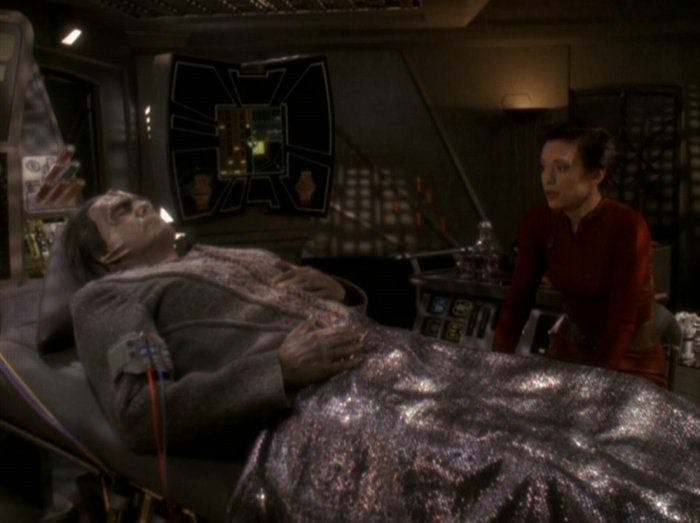
StarTrek.com
Of the major players, Kira is perhaps the character that undergoes the most changes over the course of the series. A resistance fighter and a survivor of the Cardassian occupation of her homeworld, she’s motivated by a fierce anger. However, she quickly begins to question her own internalized hatred. In “Ties of Blood and Water,” she has trouble coming to terms with the past of a Cardassian man she’d come to think of as family, but ultimately stays by his side during his long, painful death from a terminal illness. Recounting the loss of her own father, her final speech will no doubt resonate with any viewer who’s lost a loved one.
6. Odo's Fatherly Pride
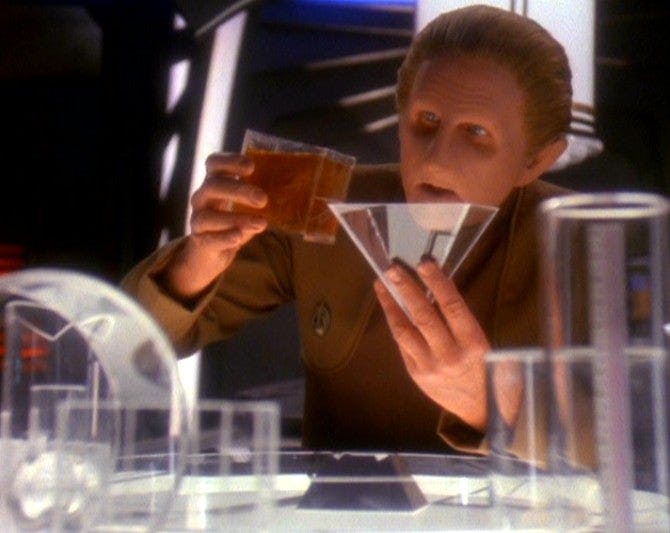
StarTrek.com
A recurring DS9 theme is the father-son relationship. Somewhere in between loving and turbulent, we find Odo and Dr. Mora. When a baby Changeling is brought to the station in “The Begotten,” Odo is charged with raising the foundling. He promises that it won’t face the same challenges he did and shows it nothing but love and understanding. Working side by side with Dr. Mora, the Bajoran scientist assigned to study him, they rejoice as the Changeling forms a roughly humanoid face and rises from its liquid state. Despite their troubled past, the look of fatherly pride on both their faces is stirring, and indicative of a reconciliation between the two, reminding us that even estranged families can come together over a shared joy.
5. Dukat Defends the Occupation
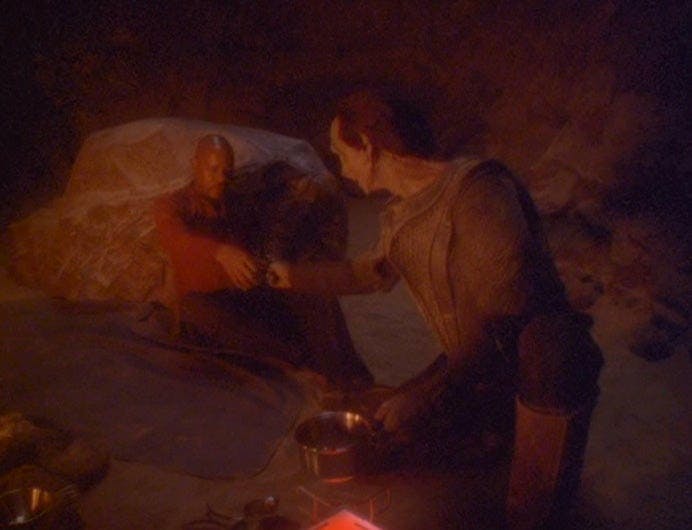
StarTrek.com
With incredible performances from Avery Brooks and Marc Alaimo, “Waltz” brought a whole different dynamic to the screen; it was almost more like watching a play than a television show. Stranded on a hostile planet and determined to win Sisko’s approval, Dukat’s final outburst defending his actions during the Occupation is chilling. His speech demonstrates just how dangerous a charismatic leader can be, convincing not only himself, but even some audience members that his atrocities were justified.
4. Weyoun 6's Sacrifice
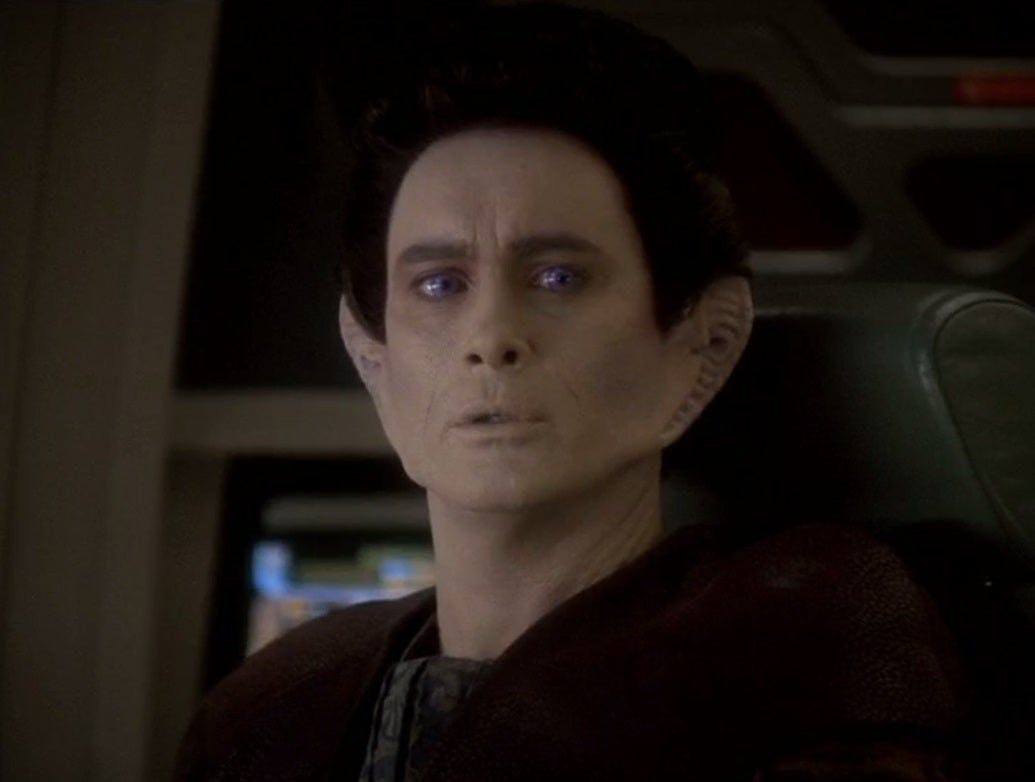
StarTrek.com
No DS9 list of any kind would be complete without mentioning Weyoun. A Vorta clone, several iterations of this character pop up as DS9 progresses. Most important is Weyoun 6, the defective clone from “Treachery, Faith, and the Great River.” Admitting that an illness plagues the Great Link and questioning his own faith, Weyoun 6 strives to serve the Founders by defecting to the Federation, or more specifically Odo, and ensuring the survival of the Dominion through him. His dedication is short-lived, however, as he activates his self-destruct implant to save Odo. Weyoun 6’s sacrifice shows the lengths to which people will go in dedication to their faith.
3. Nog Faces His PTSD
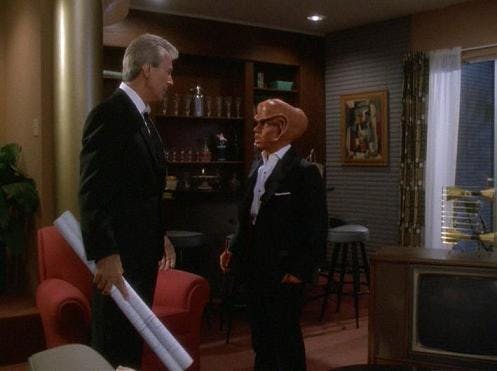
StarTrek.com
One of DS9’s great strengths is the attention given to many of the recurring characters, such as Nog, the Ferengi miscreant turned model Starfleet cadet. Eager to prove himself, Nog relishes the opportunity to fight the Dominion alongside the other officers. Reality comes crashing down on Nog, though, when he loses his leg in a brutal firefight. Hiding from his pain in a Holoprogram, he’s finally forced to tearfully confront his fear and loss in an agonizing conversation with Vic Fontaine. Clearly a thinly veiled dialogue about Post Traumatic Stress Disorder, Nog’s breakdown — and steps towards recovery — in “It’s Only a Paper Moon” is no doubt a great comfort to anyone struggling with trauma.
2. Sisko and Garak's Final Confrontation
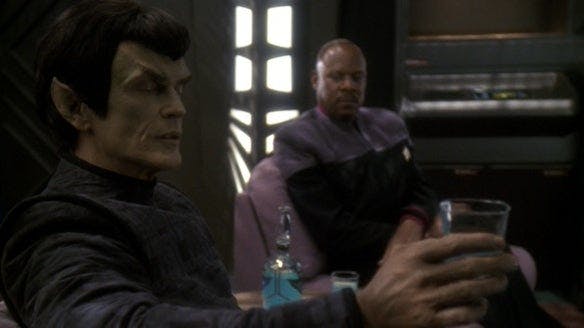
StarTrek.com
“In the Pale Moonlight” is considered one of Trek’s best episodes. So, let’s look at what it is that really makes it so impactful: the final confrontation between Sisko and Garak. Sisko’s building anger at the questionable choices he feels he’s being forced to make to win the war finally comes to a head at Garak’s expense. Cradling a bruised jaw, Garak doesn’t shy away, but doubles down on the manipulative, deadly tactics they’ve undertaken to ensure the Romulans’ involvement in the war. An incredibly brave direction for the writers to take DS9, this moment raises the question — what is the price of our self-respect? And is it ever morally righteous to take a life, even if it means potentially saving others?
1. Damar's Reckoning

StarTrek.com
In my opinion, this moment is by far the most poignant in the entirety of DS9 and summarizes what the series is really all about. It’s brief, quiet and powerful. When Damar learns of his wife and child’s deaths as a punishment for his rebellion against the Dominion, he’s devastated. His shock and heartbreak are almost palpable as he numbly questions who orders the murder of innocent people. Kira, lending her experience as a resistance fighter to help guide the fledgling resistance, retorts almost in a whisper, “Yeah, Damar. Who gives those kinds of orders?” Such a simple piece of dialogue, but so evocative, especially considering Damar’s reaction. Rather than argue, his eyes flicker with understanding and he walks away without a word. In such a short moment, we’re given the absolute definition of what made DS9 so remarkable — its willingness to address humanity’s darker sides, tempered with a hope that we can be better.
This article was originally published on September 18, 2019.
Vean Chevalier (she/her) is a trained psychologist and biologist who currently works as a zookeeper and specializes in observable behavior. She has been an avid Trekkie for more than 30 years.
Stay tuned to StarTrek.com for more details! And be sure to follow @StarTrek on Facebook, Twitter, and Instagram.

